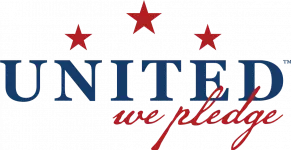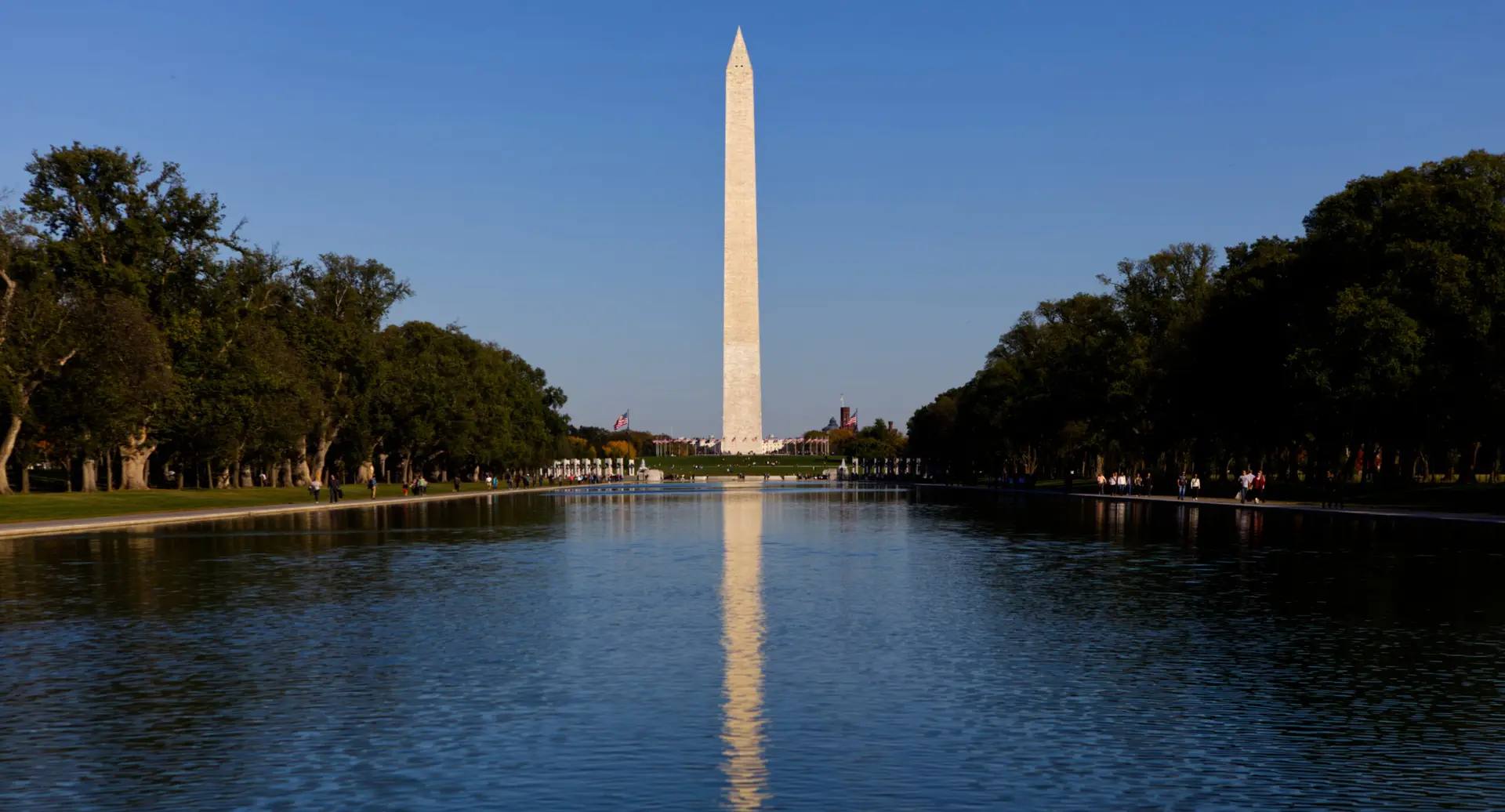Is the United States a Republic? Or a Democracy?

Have you ever heard that the USA is a republic, a democracy, or both, and wondered what is true? This question is often debated, sometimes in very public spheres, by people who love this country and value the form of government we have. They want to ensure it continues to work for the people.
After all, “We the People” is a very democratic phrase, but nowhere in the Constitution itself does the word “democracy” appear.
This would be a lot easier to answer if the terms had perfect definitions, but they can be vague. It’s kind of like defining a platypus. Is it a mammal or a bird? It has a duck bill and lays eggs, but it has fur and milk, too. But, where the platypus is definitely a mammal, just a weird one, the United States being a democracy or republic is also confusing for some.
Even an appeal to the dictionary doesn’t provide clarity. Let’s read definitions of these two words:
“a government in which supreme power resides in a body of citizens entitled to vote and is exercised by elected officers and representatives responsible to them and governing according to law”
“a government in which the supreme power is vested in the people and exercised by them directly or indirectly through a system of representation usually involving periodically held free elections”
Even though these two definitions are very similar, the first definition is for “republic,” while the second is for “democracy.”
In order to bring a little more clarity to the discussion, this post is broken into three parts. Part 1 discusses the USA a republic. Part 2 discusses its democratic principles, and part 3 just brings it all together.


The United States as a Republic
The constitution created a framework of representative government. Our elected officials use political power to enact, enforce and adjudicate laws. This is a simple definition of republican government: representation.
The term comes from ancient Rome. a Senator, consul and philosopher named Cicero wrote a book, calling it “De Re Publica” or “That Public Thing” meaning the public government. Rome’s government at the time consisted of an elected senate and appointed consuls, kind of like presidents. Our government works in a similar manner.
When leaving the Constitutional Convention, Benjamin Franklin was stopped by Elizabeth Powell, her household had discussed matters of political significance with several of the delegates to the convention.
“Well, Doctor,” she asked, “what have we got? A republic, or a monarchy?”
Franklin’s famous response: “A republic, if you can keep it.”
(Journal of James McHenry, Sept 18, 1787, included in “The Records of the Federal Convention of 1787” )
Our founding fathers and history are full of examples of the idea of a republican form of government:
The U.S. Constitution (1787):
Article IV, Section 4: The Constitution guarantees to every state in the Union a “Republican Form of Government.” This reflects the Founders’ commitment to a government where the authority comes from the people rather than a monarchy or dictatorship. The term “Republican” here means a representative government in which elected officials govern on behalf of the citizens.
Federalist Papers:
Federalist No. 10 (James Madison, 1787): Madison argued that a republic, unlike a pure democracy, can control factions by electing representatives who would refine and enlarge public views. He emphasized that a republic could cover a larger territory and more people than a direct democracy, making it more practical and stable.
Federalist No. 39 (James Madison, 1788): Madison provided a more detailed definition, stating that a republic derives all its powers directly or indirectly from the people. He clarified that it is administered by persons holding their offices during pleasure, for a limited period, or during good behavior, meaning that the government’s authority is derived from and accountable to the people.
The Declaration of Independence (1776):
While not directly defining a republic, the Declaration’s emphasis on “consent of the governed” as the foundation of legitimate government aligns with republican ideals. It asserts that governments are instituted to secure the unalienable rights of the people, deriving their powers from the consent of those they govern.
George Washington’s Farewell Address (1796):
Washington stressed the importance of unity and warned against political parties that might lead to tyranny. His address reflects the republican ideal of a government that avoids the dangers of factionalism and corruption, which could undermine the people’s sovereignty.
Thomas Jefferson’s Notes on the State of Virginia (1785):
Jefferson argued for a government rooted in the will of the people, stating that “laws made by common consent must not be trampled on by individuals.” His views support a republican government where laws and policies reflect the collective will and are not subject to the whims of rulers.

The United States Rooted in Democratic Principles.
When the US declared independence, and Thomas Jefferson penned the Declaration, the founding fathers argued their point with these words: “That to secure these rights, [the unalienable rights mentioned before, including life, liberty pursuit of happiness] Governments are instituted among Men, deriving their just powers from the consent of the governed, –That whenever any Form of Government becomes destructive of these ends, it is the Right of the People to alter or to abolish it, and to institute new Government.”
James Wilson, a drafter of the Constitution and one of the first Supreme Court Justices, defended the Constitution in 1787 by speaking of the three forms of government in the world to be “monarchical, aristocratical, and democratical,” and said that in a democracy the sovereign power is “inherent in the people, and is either exercised by themselves or by their representatives.”
(“The Substance of a Speech … Explanatory of the General Principles of the Proposed Federal Constitution; … in the Convention of the State of Pennsylvania”, … 24 Nov. 1787; Wilson, James; Printed by Thomas Bradford , 1787 Philadelphia)
The terms “democracy” and “republic” are often pitted against each other, as if there is no overlap in their definitions or use. The constitution, after all, never uses the term “democracy.” But the framers did. As mentioned in the two quotes above, the framers understood what a representative democracy was. Here are some interesting examples of how a democracy was viewed and discussed by the framers of our nation:
James Madison, Federalist No. 10 (1787):
Madison discusses democracy in contrast to a republic. He defines a pure democracy as a society consisting of a small number of citizens who assemble and administer the government in person. He argues that pure democracies have historically been prone to “turbulence and contention” and have generally been short-lived. Madison advocates for a republic, where elected representatives govern on behalf of the people, as a more stable and just form of government.
Quote: “A pure democracy, by which I mean a society consisting of a small number of citizens, who assemble and administer the government in person, can admit of no cure for the mischiefs of faction.”
James Madison, Federalist No. 14 (1787):
Madison addresses the difference between a democracy and a republic, particularly in terms of scale. He argues that a republic can govern a larger territory than a democracy because it operates through representatives rather than direct participation by all citizens.
Quote: “In a democracy, the people meet and exercise the government in person; in a republic, they assemble and administer it by their representatives and agents.”
Alexander Hamilton, Federalist No. 9 (1787):
Hamilton also draws a distinction between a pure democracy and a republic. He acknowledges the historical weaknesses of pure democracies, citing ancient examples where democracies often led to instability.
Quote: “The science of politics, however, like most other sciences, has received great improvement. The efficacy of various principles is now well understood, which were either not known at all, or imperfectly known to the ancients. The regular distribution of power into distinct departments; the introduction of legislative balances and checks; the institution of courts composed of judges holding their offices during good behavior; the representation of the people in the legislature by deputies of their own election: these are wholly new discoveries, or have made their principal progress towards perfection in modern times. They are means, and powerful means, by which the excellencies of republican government may be retained, and its imperfections lessened or avoided.”
Thomas Jefferson, Letter to John Taylor (1816):
Jefferson uses the term “democracy” in a more favorable light, but he still emphasizes the importance of a government that represents the people rather than one in which all citizens directly participate in every decision.
Quote: “Democracy is nothing more than mob rule, where fifty-one percent of the people may take away the rights of the other forty-nine.”
John Adams, Thoughts on Government (1776):
Adams discusses the idea of a balanced government that combines elements of democracy, aristocracy, and monarchy. He warns against the dangers of pure democracy, which he believes can lead to tyranny.
Quote: “Remember, democracy never lasts long. It soon wastes, exhausts, and murders itself. There never was a democracy yet that did not commit suicide.”
The United States doesn’t have the direct democracy of ancient Greece, it is true. This is where so many get caught up in the democracy/republic definitions. Yet the United States still utilizes democratic principles and actions in things like ballot referendums, or initiatives, where the people all directly vote for a law or other political decision. Some states and localities afford their citizens the right to use these measures to directly enact, change, or repeal laws themselves.
More often, we the people utilize our voting power in a different way. We vote in elections to choose our representatives. That is what we call representative democracy or more commonly known as a “democratic republic”.
Alexander Hamilton used the term in a letter to Governeur Morris (that’s his name, not a title):
“But a representative democracy, where the right of election is well secured and regulated & the exercise of the legislative, executive and judiciary authorities, is vested in select persons, chosen really and not nominally by the people, will in my opinion be most likely to be happy, regular and durable.”
—A. Hamilton to Governeur Morris, 19 May 1777
Our Democratic Republic
Throughout the history of the United States, our society and government has functioned in both ways, or perhaps better said, we utilize characteristics of both forms of governance. The constitution set up a government which had never before been tried on the planet. Although there have been other republics, and democracies, none had the exact same form as the USA. It is truly unique in the history of the world. True, many other nations today are modeled on many aspects of America, including America’s unique take on democracy and governance; but even so, we are still very unique in the world.
We the People ultimately decide on the rules, but we do so primarily by electing people that represent us and they work within specific established rule-bound institutions like Congress, the executive branch and the courts. This is a very republican way of setting up the structure of government.
The relationship between the aspects of democratic and republican governance in America is long and constantly changing. Indeed, you could say that this debate is as old as the, er, republic.

